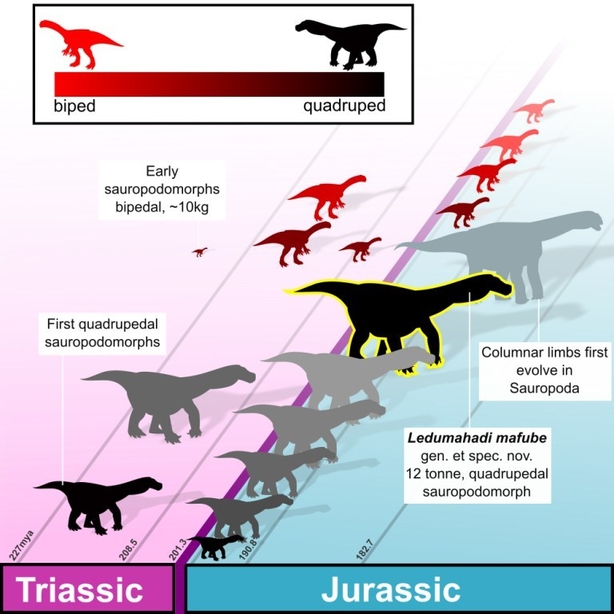A new species of a giant dinosaur has been found in South Africa's Free State province, according to scientists.
The plant-eating creature, named Ledumahadi mafube, weighed 12 tonnes and stood about four metres high at the hips.
Ledumahadi mafube was the largest land animal alive on Earth when it lived nearly 200 million years ago.
It was roughly double the size of a large African elephant.
A team of international scientists, led by University of the Witwatersrand (Wits) paleontologist Professor Jonah Choiniere, described the new species in the Current Biology journal.

Ledumahadi mafube is one of the closest relatives of sauropod dinosaurs.
Sauropods, which weighed up to 60 tonnes, include well-known species such as the Brontosaurus.
All sauropods ate plants and stood on four legs, with a posture like modern elephants.
The ledumahadi evolved its giant size independently from sauropods, and although it stood on four legs its forelimbs would have been more crouched.
This caused the scientific team to consider Ledumahadi an evolutionary "experiment" with giant body size.
The Ledumahadi is closely related to other gigantic dinosaurs found in Argentina that lived at a similar time, which reinforces the theory that the supercontinent of Pangaea was still assembled in the Early Jurassic.
"It shows how easily dinosaurs could have walked from Johannesburg to Buenos Aires at that time," says Professor Choiniere.

